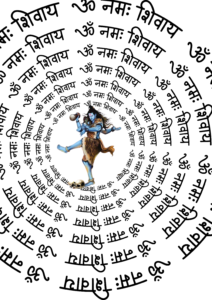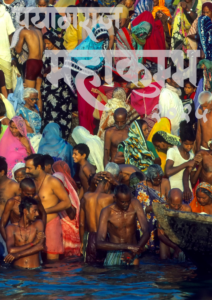In 2025, the world will once again witness the grand spectacle of the Mahakumbh, an event that stands as one of the most significant and spiritual gatherings on Earth. This immense religious congregation, held in the sacred city of Prayagraj (formerly known as Allahabad), India, will bring together millions of pilgrims, ascetics, and devotees in a display of devotion, spirituality, and unity. As the largest human gathering on the planet, the Mahakumbh is an extraordinary event that attracts people from all walks of life.
The Sacred Significance of the Mahakumbh
The Kumbh Mela is held at four locations in India: Haridwar, Allahabad (Prayagraj), Nashik, and Ujjain, with the Mahakumbh being the most auspicious of these events. The Mahakumbh occurs once every 12 years at one of the four locations, and in 2025, Prayagraj will be the chosen site. This event holds profound religious and cultural significance, primarily for Hindus, as it is believed that bathing in the sacred confluence of the Ganges, Yamuna, and the mythical Sarasvati River cleanses one’s sins and ensures liberation (moksha).
The term “Mahakumbh” translates to “great pitcher,” referring to the mythological tale in which the gods and demons churn the ocean for the nectar of immortality, from which a pitcher containing the elixir spilled over at four locations — the sites where the Kumbh Mela is celebrated today.
A Spiritual and Cultural Melange
During the Mahakumbh, Prayagraj becomes a temporary city, bursting with life and energy. The riverbanks and the ghats (steps leading to the river) are adorned with thousands of tents, stalls, and temples. Pilgrims come from all parts of India and even abroad to participate in the holy dip in the sacred rivers. The city comes alive with spiritual fervor, chants of mantras, devotional songs, and the smell of incense filling the air.
One of the key highlights of the Mahakumbh is the gathering of India’s most revered saints, sadhus, and ascetics, who set up camps, hold spiritual discourses, and take part in grand processions. The sight of these holy men, some of whom have renounced worldly possessions, is awe-inspiring. The event is not only a religious gathering but also a platform for spiritual reflection, learning, and connection.

The Scale of the Gathering
In 2025, the Mahakumbh is expected to attract over 150 million people over the course of approximately one month. This makes it the largest peaceful human gathering on the planet. The scale is staggering: the Kumbh is so vast that it can only be compared to a mini city that emerges and disappears in the blink of an eye.
Each day, millions of devotees take a dip in the holy waters, and on certain “shahi snan” or royal bathing dates, the rush of people is immense. The sight of this massive sea of humanity converging by the riverbank is nothing short of extraordinary. The event is carefully organized with infrastructure to support the influx of visitors, including thousands of volunteers, medical teams, and security personnel to ensure the safety and smooth operation of the event.

Safety and Infrastructure
Given the scale of the gathering, the 2025 Mahakumbh will require state-of-the-art planning, infrastructure, and logistics. The Indian government and local authorities have been preparing for years, focusing on building temporary infrastructure like roads, toilets, bridges, and healthcare facilities. The security arrangements will be enhanced, with surveillance drones, CCTV cameras, and a large contingent of police and military forces to ensure safety.
One of the key aspects of the Kumbh Mela is its commitment to providing a secure and comfortable environment for devotees. The sheer size of the event makes crowd management a priority, with the authorities implementing measures to handle large gatherings without incidents.
The Cultural Impact
Beyond its religious importance, the Mahakumbh also serves as a celebration of India’s rich cultural heritage. Artists and performers from across the country participate in various cultural events, showcasing traditional music, dance, and art forms. The atmosphere is one of unity, as people from diverse regions and backgrounds come together in a spirit of togetherness and harmony.
The Mahakumbh also highlights India’s remarkable ability to host such large-scale events while preserving its spiritual roots. It serves as a reminder of the deep cultural and religious connections that bind people to their history and traditions. For many, the Mahakumbh is a once-in-a-lifetime experience, a moment of reflection, purification, and spiritual rejuvenation.
Global Recognition
Over the years, the Kumbh Mela has gained international recognition for its scale and significance. In fact, it was recognized by UNESCO as an Intangible Cultural Heritage of Humanity. As the 2025 Mahakumbh draws closer, the event will not only attract millions of Indian pilgrims but also global tourists and scholars eager to witness this remarkable celebration of faith.
The Mahakumbh is not only a religious festival but a global symbol of unity, peace, and collective consciousness. It brings together people from all corners of the world, regardless of their cultural or religious background, united in the quest for spiritual fulfillment.
